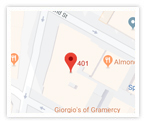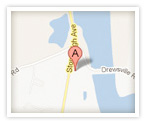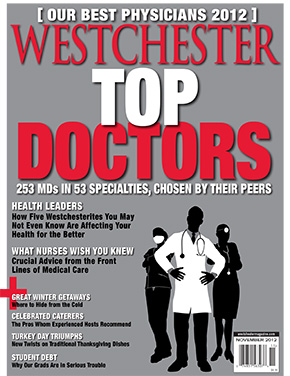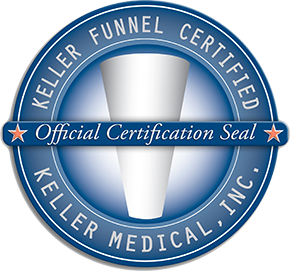 If you have been diagnosed with breast cancer and are having or had a mastectomy, you owe yourself a consultation with a Westchester County breast augmentation surgeon to discuss breast reconstruction. Most patients are candidates for breast reconstruction though some patients elect not to have reconstruction. It is entirely your decision to have breast reconstruction. Breast reconstruction is generally performed after mastectomy for breast cancer, but may also be performed to correct a congenital absence or acquired loss of the entire or a portion of the breast. The procedure may be either “immediate” or “delayed”, and may involve the use of an implant or transfer of your own tissues to reconstruct the breast. Often times, a combination of your own breast tissue with an implant is used. “Immediate reconstruction” is usually performed during the same operation as the mastectomy, while “delayed reconstruction” is performed at some later date after the tissues have healed.
If you have been diagnosed with breast cancer and are having or had a mastectomy, you owe yourself a consultation with a Westchester County breast augmentation surgeon to discuss breast reconstruction. Most patients are candidates for breast reconstruction though some patients elect not to have reconstruction. It is entirely your decision to have breast reconstruction. Breast reconstruction is generally performed after mastectomy for breast cancer, but may also be performed to correct a congenital absence or acquired loss of the entire or a portion of the breast. The procedure may be either “immediate” or “delayed”, and may involve the use of an implant or transfer of your own tissues to reconstruct the breast. Often times, a combination of your own breast tissue with an implant is used. “Immediate reconstruction” is usually performed during the same operation as the mastectomy, while “delayed reconstruction” is performed at some later date after the tissues have healed.
 Breast reconstruction using expanders and implants is often the easiest in terms of recovery for the patients. An expandable implant is placed at the time of your mastectomy in cases of immediate breast reconstruction; this expandable implant is replaced with a saline or silicone-filled breast implant after it has been expanded to a volume that matches the unaffected breast. In cases of bilateral reconstruction, the expanders are expanded symmetrically. Using expanders and implant alone for breast reconstruction requires at least 2 surgical procedures. Furthermore, in thinner patients, the implants are frequently palpable and implant rippling may be noticeable. Problems with rippling and palpability have been reduced by using Alloderm® for inferior implant coverage. Alloderm is placed at the time of the mastectomy and helps to better define the fold underneath and lateral to the breast and provides additional padding where muscle coverage of the implant is more difficult.
Breast reconstruction using expanders and implants is often the easiest in terms of recovery for the patients. An expandable implant is placed at the time of your mastectomy in cases of immediate breast reconstruction; this expandable implant is replaced with a saline or silicone-filled breast implant after it has been expanded to a volume that matches the unaffected breast. In cases of bilateral reconstruction, the expanders are expanded symmetrically. Using expanders and implant alone for breast reconstruction requires at least 2 surgical procedures. Furthermore, in thinner patients, the implants are frequently palpable and implant rippling may be noticeable. Problems with rippling and palpability have been reduced by using Alloderm® for inferior implant coverage. Alloderm is placed at the time of the mastectomy and helps to better define the fold underneath and lateral to the breast and provides additional padding where muscle coverage of the implant is more difficult.
 For properly selected breast reconstruction patients, use of the latissimus dorsi flap may provide a better option for their breast reconstruction. The latissimus dorsi muscle is a large flat muscle on the back. It can be rotated to the chest wall with a portion of its overlying skin. The skin and muscle when moved to the chest can replace skin that was sacrificed during a mastectomy. The flap also provides additional padding when used to cover an implant or an expander. In the appropriate patient, it may result in a more natural reconstruction. By replacing mastectomy skin at the time of your mastectomy, the need for tissue expansion may be obviated. This would allow a one stage reconstruction with immediate placement of an implant under the flap at the time of your operation. In a small subset of patients, the latissimus dorsi flap may provide adequate volume to obviate the need for an implant or expander completely (“autologous reconstruction”). This will be discussed at the time of your consultation.
For properly selected breast reconstruction patients, use of the latissimus dorsi flap may provide a better option for their breast reconstruction. The latissimus dorsi muscle is a large flat muscle on the back. It can be rotated to the chest wall with a portion of its overlying skin. The skin and muscle when moved to the chest can replace skin that was sacrificed during a mastectomy. The flap also provides additional padding when used to cover an implant or an expander. In the appropriate patient, it may result in a more natural reconstruction. By replacing mastectomy skin at the time of your mastectomy, the need for tissue expansion may be obviated. This would allow a one stage reconstruction with immediate placement of an implant under the flap at the time of your operation. In a small subset of patients, the latissimus dorsi flap may provide adequate volume to obviate the need for an implant or expander completely (“autologous reconstruction”). This will be discussed at the time of your consultation.
Another option for breast reconstruction in appropriately selected patients is to utilize excess skin and fat of the lower abdomen to reconstruct the breast mound. An incision similar to that required for a tummy tuck is utilized to harvest the lower abdominal skin and fat with the underlying rectus muscle. Once the lower abdominal tissues have been isolated, the tissue can be transferred to the chest wall. Once on the chest wall, the abdominal tissues are sculpted to recreate the breast. Recovery after an abdominal flap is longer than with the previously discussed procedures; however, the result is a soft, natural feeling reconstructed breast that should last a life time. Dr. Greenwald will discuss the risks and benefits of each type of reconstruction at the time of your consultation. Dr. Greenwald is happy to answer basic questions about breast reconstruction via email.
Dr. Greenwald is also recognized as a leading breast lift, breast augmentation and breast reduction surgeon.









